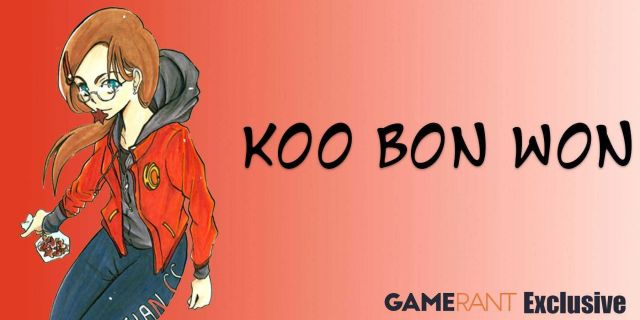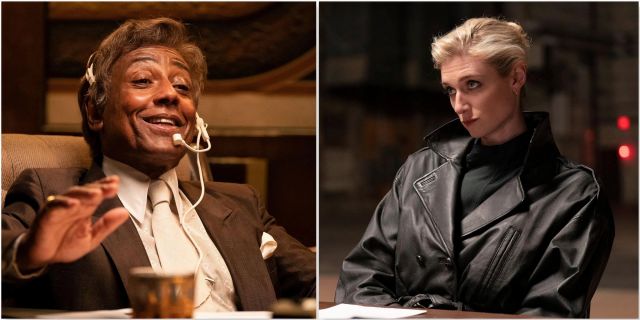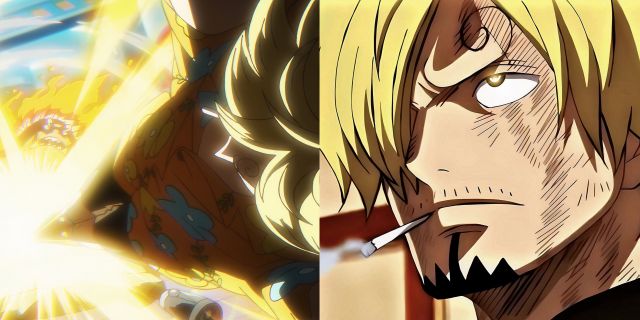Highlights
- Koo Bon Won pursued her passion for manga by studying at Kyoto Seika University, the only university in the world that offers a manga degree.
- Koo faced challenges attending a Japanese school as a Korean, but found it easier than her experience in Germany. Language and financial issues were overcome through hard work and scholarships.
- Koo advises aspiring manga artists to pursue their passion as a hobby, not focusing on making money. She also emphasizes the importance of continuous practice and avoiding piracy.
Every anime and manga fanatic has fantasized about making one of their own at one point or another. Though given the competitive industry, it’s far from easy. Koo Bon Won, an artist of Korean descent took up the challenge anyway and pursued her passion in Japan, studying at one of, if not the only university in the world that offers a manga degree: Kyoto Seika University.
An institution also attended by notable industry professionals such as Naoto Ohshima, the designer of Sonic The Hedgehog. Years later, Koo would come to work at Kansai Gaidai University in Osaka to share her knowledge and train the next generation of mangaka. As of 2023, she is also a professor at Kyoto Seika.
RELATED: Kaiji Tang Interview: Behind The Scenes of Satoru Gojo’s Voice Actor
GR: How did you enter Kyoto Seika University? What steps did you take to be enrolled?
Koo: In 2005, Story Manga Course was still a part of Art Faculty (now it is Manga Faculty), so my admission exam was design, portfolio, interview and a Japanese test. I had JLPT 1kyuu (now N1) already – but since they have their own Japanese test, it was not really needed. But it still helps when you apply for the admission examination. Now, it has changed a lot. For me, there was only one test just for foreign students, but now you apply with Japanese students, and there are different ways of enrollment starting around August already.
GR: How did you hear about Kyoto Seika, and why did you decide to pursue a degree here?
Koo: I was preparing an exchange program abroad at my German university in Japan, to find out how I can study Manga. Then really in a miracle way, my parents’ friends visited Kyoto and told some people that I was preparing an exchange, just to look for a manga studying school. And these people knew some other people from Kyoto Seika, and in 2005, Kyoto Seika was the ONLY university where you could study manga for a Bachelor’s. There were a lot of academies where you could study manga drawing techniques in 2 years, but you won’t get any degree. So I decided to drop my plans for the exchange program and just packed my things and moved to Korea, to prepare for the admission exam.
RELATED: An Exclusive Interview With Yoko Taro and The Team Behind KamiErabi GOD.App
GR: Being Korean, did you face any challenges attending a Japanese school? How did you overcome them?
Koo: To be honest, it was much easier than the challenges I had when I moved to Germany. As a Korean, the language is very similar, I look similar, and my way of thinking is also quite similar to Japanese society. I had some problems and advantages, because I was a Korean from Germany. For example, there were no school fees for universities in Germany, but I had to pay a lot for Kyoto Seika. Fortunately, I got some scholarships during the years, so it came out that I spent less money than I thought, but if I had to pay the full price, I don’t know if I would have made it. For example, back in 2005, foreign students were paying just 50~60% of the fee, but now, they have to pay the same amount as the Japanese students, so it definitely became harder.
I also could imagine that the language is very difficult. If you are drawing manga, it is just not enough to be fluent in Japanese. You have to be creative in Japanese, and I see most of my foreign students struggle at that point. They are not even fluent, but they have to go beyond. I just read a lot to overcome this problem, and there is no other way than to consume a lot of Japanese media in all forms to get better in this language.

GR: As a trained manga artist, what advice would you give to those who want to try their hand at making manga/doujinshi?
Koo: Especially for doujinshi artists, it is true that in Japan there are doujin artists who even earn more money than the actual manga artists. But basically, drawing doujin is a hobby – it is not a job. A hobby is something you spend money on, and it is not a tool to earn money. If you play online games, you spend money on it. And of course, if you are good at it, you may earn money with your playing, maybe you also become famous with it and become a pro player. But at some point, you are not a hobby player anymore – games are becoming your job.
So when you start drawing doujinshi, you should not aim for money. You should not be sad that you are not sold out, and you spend more money than you earn. This is your hobby, not your job. And if you keep doing it for fun (because hobby should be something you are having fun with), one day you will notice that the minuses are getting less and less, and more people start recognizing your artworks, because you have spent so long on it; and then the turning point is coming, are you going to be a professional? Or keep on being a hobby artist? You may already know, but if your hobby becomes your job, it sometimes is not fun anymore, so you have to decide carefully.
Anyway, keep doing it is the key, and don’t think it will be good enough as a product to sell on your first try. Keep doing it and have fun doing it as a hobby. There is one more thing, if you want to become a professional artist, do not consume piracy. You cannot tell the people to BUY your works, while you are not paying your money on other people’s work (which are probably even better than your work).
RELATED: Interview: What it Means to be a Female Business Owner in Japan
GR: What classes are taught for Kyoto Seika’s manga degree? Which ones did you find the most helpful? Which ones were the most challenging?
Koo: There are now 2 manga courses in Kyoto Seika. The story manga course and the new generation manga course. The second one is doing more digital works than the first one, but both are doing basically the same classes. The most challenging part is producing manga in the later half of the year. In the first year you have to make 8 pages and in the second year you are making 16 pages. The thing is it has to be a closed story with 8 or 16. You cannot draw less or more. You also are not allowed to draw a digest or the first episode of a longer story, and it has to have a certain quality. I think to think of a story finishing exactly by 8 or 16 pages is quite difficult. And the level requested for those pages were higher than I expected. All of my classmates were really good, so I struggled a lot to keep at the same level.
GR: What influenced your decision to teach manga at Kansai Gaidai?
Koo: To be honest I did not really expect that I will be the one who gets the job. I was also hesitating to apply for the job, because I still was writing my thesis, and I was stuck with it. So I thought, shouldn’t I just concentrate on my studies? But I was getting a scholarship from Rotary Club, and my councilor told me I definitely should try; and so I applied for the job, thinking if I don’t get the job, I wouldn’t mind. But I got the position! And I have to say, it was a good decision, because I didn’t think I would be a good teacher, or I would enjoy teaching, but in fact, I am enjoying it.

GR: As you are now working at Kyoto Seika as a teacher, what are your hopes for your students as they pursue their career goals?
Koo: In Kyoto Seika, things are slightly different. If there were some students who are not really good at drawing in my class at KGU, it was not a big deal. But in Kyoto Seika, it is a big deal. Even if they are good at drawing, if they are not good at creating stories, I also have to find a way for them. I encourage them to go to an editor and show their works, and for doing that, they have to draw a lot, and mostly, the students who are making an effort to work with an editor, will have more chances. I also try to coach to see what they can and what they can’t do. If they are good at drawing, but they have language problems, maybe it is better to have someone who draws the name for them. If they are good at making stories but bad in drawing, maybe they should try to become name-gensakusha (the one who puts together the story, but leaves the drawing to someone else).
GR: With the rise in popularity with Webtoons, in what direction do you think manga is going?
Koo: I think manga will still remain, also the books won’t vanish soon, but webtoon is a good alternative for manga. Even if smartphones become history, and we start use another device in the future, the chances that the reading direction from top to bottom is going to be supported is higher than the reading direction from right to left. But a new media is always coming with new possibilities. For example, Japanese manga did not choose to become b/w. It had no choice, because of the cost. Now in webtoon you can use any kind of color which is supported by your screen. In RGB, and not in CMYK. That is a spectrum of colors you couldn’t even think of, when you were consuming books.
So basically, I want my students to see the new possibilities, if they see a new media, and I want them to challenge and try out what ever they can do to the limit and have fun with each try. I think it is pity when my students keep saying “you cannot do this” and only say what you could do with printed books. What you can’t do, is not that important. It is always important to keep your eyes in what you can do. And that is also in drawing traditional form of manga, it is not important that you cannot use color. Or that you have only limited number of pages. It is more important to find out what you can do with b/w and what you can do if you had 8 blank pages in front of you.

While Kyoto Seika University is still open for enrollment, a lot as changed over the years since Koo’s time – especially regarding the manga industry as a whole, and some ways, more difficult – but this doesn’t mean you should give up! Always challenge yourself and aim for success.











Leave a Reply